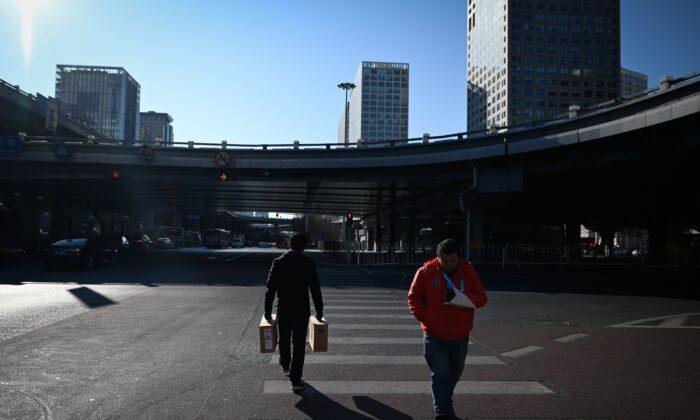News Analysis
China’s economy “fell off a cliff” during the initial outbreak of the CCP virus, and it now faces recovery risks as its international customers are affected by the global pandemic, according to Inkstone News, a China-focused online newspaper platform.
China economic policy advisor Zhang Yansheng had tried to reassure Wall Street analysts in mid-February that the virus outbreak would only cause a modest reduction in China’s 2020 GDP growth to “around 6 percent,” versus 6.1 percent expansion in 2019. China also claimed to be opening factories, airports, and ports to resume exports in hopes of gaining market share from customers hobbled by the CCP (Chinese Communist Party) virus.
The Epoch Times refers to the novel coronavirus, which causes the disease COVID-19, as the CCP virus because the Chinese Communist Party’s coverup and mismanagement allowed the virus to spread throughout China and create a global pandemic.
But Inkstone News reported that China’s economy in the first two months of 2020 saw fixed-asset investment plunge 24.5 percent; consumption tank 20.5 percent; industrial production dive 13.5 percent; and energy consumption sink at the fastest rate in 5 years.
The Chinese regime’s suppression of information and delayed response to the initial outbreak of the CCP virus created an epidemic across China and unleashed the first global mass pandemic since the 1918 influenza.
Goldman Sachs responded to China’s lack of candor by slashing GDP growth estimates for the first quarter to negative 9 percent. Both Goldman Sachs and Morgan Stanley warn that the combination of a supply-side shock from China’s shutdown coupled with the demand-side shock from the global pandemic lockdown means that China will be on the verge of suffering its first annual economic contraction since 1976.
Global consumer demand for China exports took a first level hit from the negative wealth effect associated with $27 trillion in stock market losses between Jan. 20 and March 19. Those losses came despite the fact that the U.S. Federal Reserve, Bank of England and European Central Bank injected about $3 trillion of emergency liquidity into banks.
But consumer demand for China exports is about to take an even bigger secondary hit as nations across the globe implement social distancing and business lockdowns to curb the spread of the CCP virus.
Some experts predict U.S. job losses for April will fall between 500,000 and 5 million. James Bullard, president of the St. Louis branch of the U.S. Federal Reserve Bank, predicts that second quarter GDP could plunge by 50 percent, driving the U.S. unemployment rate up by 30 percent. Such losses would be about three times the peak of 10.2 percent unemployment in the 2009 Great Recession, and more than the 24.5 percent unemployment rate of the Great Depression in 1933.






Friends Read Free